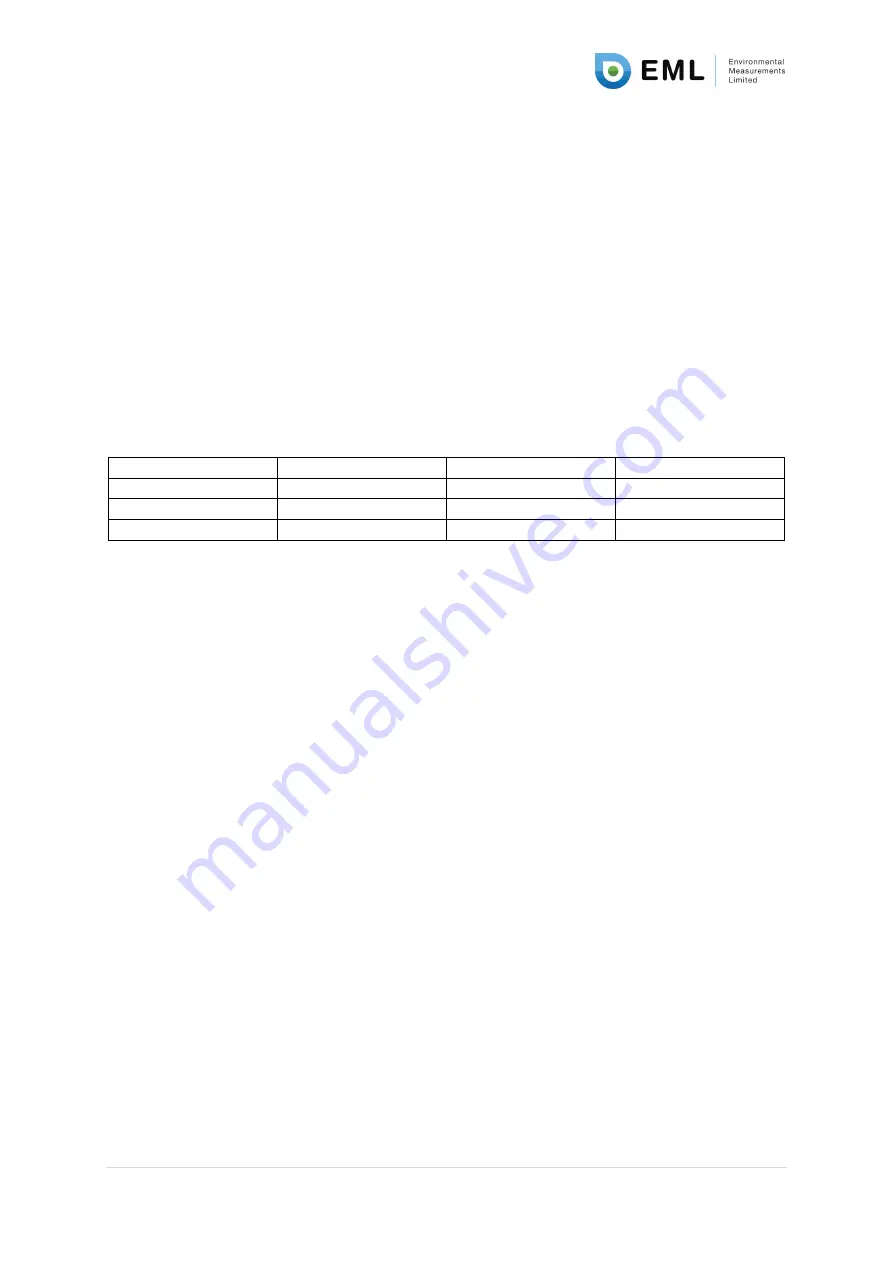
UM-155-290-Limpet User Manual
–
V2.0
8 |
P a g e
Attach the two wires to the connection points on the rain gauge and fit the logger into place. On the
Kalyx this process involves pushing the base of the logger onto the raised bar of the gauge until the
logger clicks into place and a firm attachment is achieved.
The logger is now fully set up and the gauge is ready for field deployment. For details of how to carry
out this task refer to the individual rain gauge manual.
8.
Data collection
Data can be downloaded from the logger and saved as .txt or .csv file. The data format is simple and
easily accessible. The data is separated by a comma by default. When saved as a .csv it will therefore
look like the following:
Date
Time
Calibration Factor
Count
07-10-2016
12:03:56
0.200
001
07-10-2016
12:05:02
0.200
001
07-10-2016
12:07:06
0.200
001
Downloading the data
Connect the datalogger to the PC using the method outlined in Section 4.1.
Press
‘Download Data’
button on the main screen of the software.
The data will appear in the output box in the centre of the main software screen
Saving the event data
When downloading is complete, the data should be visible in the output screen on the main page of
the software. These data can now be saved as one of two file types.
On the main toolbar, press
‘File’
. There will be two options,
‘Save As txt’
or
‘Save As csv’
.
Select the preferable file type.
A Windows Explorer box will appear, requesting the user to navigate to the location in which they
wish to save the file.
Select a suitable location and choose an appropriate file name and click
‘Save’
.
See Figure 1 for a screen grab of the software when saving the event data.































